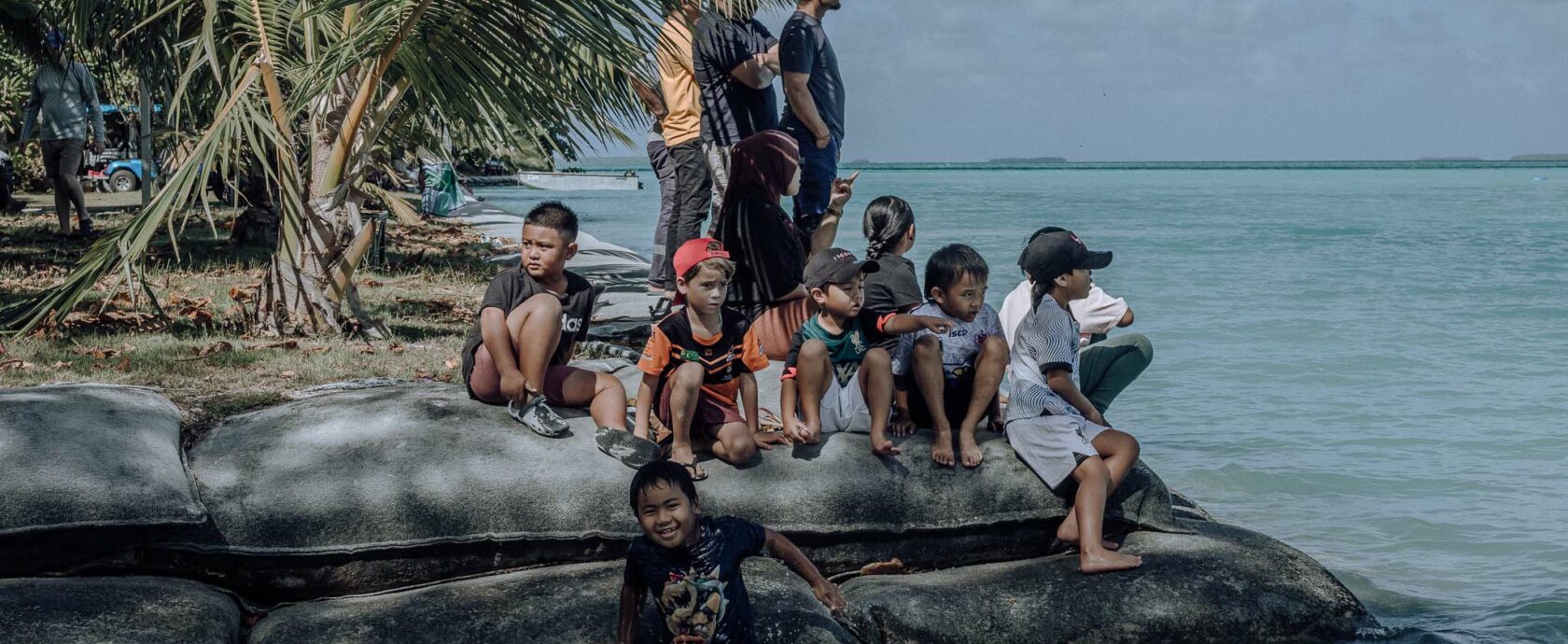History, culture & language Today the cornerstone of Cocos Malay society is the Islamic Religion. Few depart from its teachings, and Islam is the focus of most people’s lives.
The Malay dialect spoken by Cocos Malay has words that reflect their diverse origins. Modern interpretation is Bahasa Indonesian/Malay with some adaptation to local use.

History of Cocos Keeling Islands The tranquil atmosphere of the Cocos Keeling Islands gives little hint of the island’s colourful past.
From first settlement in 1826 by English merchant Alexander Hare, through decades of rule by the Clunies-Ross dynasty, most island locals had little contact with the outside world.
For many years the islands were a powerhouse of copra production. Aside from disruptions caused by cyclone damage, the industry only ceased in 1987 but the abundant coconut palms you can see today on Cocos Keeling Islands reveal the extent of the trade.

History of Cocos Keeling Islands The Two World Wars saw the islands become targets due to their strategic position in the Indian Ocean.
From 1944 to 1946 the tranquil islands came under military administration and buzzed with activity, home to thousands of military personnel. The people of the Cocos Keeling Islands voted to become part of Australia in 1984.
The islands are now an internationally significant habitat for wildlife, and a remote tropical paradise for tourists seeking adventure, culture and space to breathe.

Historical events on Cocos Keeling Islands
- 1609
Captain William Keeling discovers the Cocos Atoll during one of his voyages from Java to England. - 1805
British hydrographer James Horsburgh charts the islands and calls them the Cocos-Keeling Islands in his sailing directory. He names one of the islands after himself. - 1825
Captain John Clunies-Ross, a Scottish trader, lands on the islands on his homeward voyage from the East Indies. His orders are to investigate Christmas Island for settlement. Bad weather prevents these plans but he surveys the Cocos Keeling Islands, digs wells and plants fruit trees. - 1826
Alexander Hare, British merchant known as the ‘English White Rajah of Borneo’, and a group of his slaves are brought to the islands by Robert Clunies-Ross (brother of John) on the Hippomenes. Hare sets up the first settlement on Home Island (then called Goose Island). - 1831
Increasing disputes between Alexander Hare and John Clunies-Ross as well as Hare’s mounting financial problems lead to Hare travelling back to Batavia. John Clunies-Ross assumes control of the islands. - 1834
Hare dies in Java. John Clunies-Ross moves to Home Island and takes over Hare’s operations. - 1836
John Clunies-Ross travels to Mauritius to seek British annexation of the islands.Charles Darwin visits the atoll on the Beagle, surveys the islands and forms his theory of atoll formation. - 1886
Queen Victoria grants the islands to George Clunies-Ross and his descendants.Building of Oceania House commences using tiles and bricks from Scotland (completed in 1893). - 1914
Cocos Cable Station is attacked by the German raider SMS Emden. The Emden is defeated by the Australian light cruiser HMAS Sydney and beached on the reef at North Keeling Island (Pulu Keeling National Park). - 1941
Ceylon Garrison Artillery establishes 2 x 6-inch guns on Horsburgh Island. - 1942
February: a naval bombardment from a Japanese submarine causes slight damage to the Cable Station.March: A Japanese warship shells Direction Island; a false wireless message is sent ‘Direction Island knocked out’, and shell holes are painted on the side of buildings. Huge decoy fires convince the Japanese that the relay station is destroyed. The station on Direction Island continues to operate in secret. - 1944
Major bombing raids kill two Islanders and destroys 27 Home Island houses.John Sidney Clunies-Ross dies. - 1945
Several thousand British servicemen build and operate a RAF bomber base and Air Staging Post on West Island. The bomber and fighter planes of 11 RAF squadrons are based on Cocos Islands until the end of WW2.Operation Cockroach begins, an 1828-metre airstrip is constructed on West Island in two months. During the peak of the runway construction 8300 military personnel are stationed on Cocos. - 1949
John Cecil Clunies-Ross commences as ruler of Cocos Islands. - 1954
Queen Elizabeth II and Duke of Edinburgh visit. - 1955
Cocos Keeling Islands ‘officially’ becomes an Australian Territory; Australian Government establishes a permanent presence on West Island. - 1978
The Australian Government purchases all of the Clunies-Ross land on Cocos Islands for Australian $6.25 million, less lot 14 (Home Island) and 5 hectares surrounding it. - 1984
The Cocos Malay population vote to integrate with Australia thanks to a UN supervised act of self-determination.
- 2017
Cossies Beach on Direction Island is named best beach in Australia.
